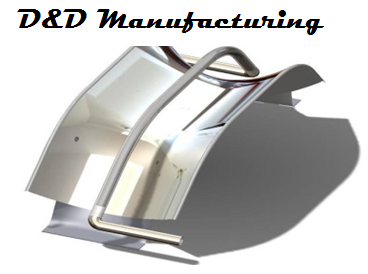Concentrating Solar Thermal
The solar energy research goals at UL Lafayette are: to perform long-term operational testing of commercial-scale concentrating solar power (CSP) electrical generation systems under actual conditions in Louisiana, to develop new cost-effective solar technologies that will be effective around the world, to assist the region with economic development, and to perform education and outreach to the community regarding solar energy.
The Solar Thermal Applied Research and Testing (START) Lab has received nearly $3 M in federal, state, and industry funding to investigate emerging CSP and CPV applications since 2012, with the primary sponsors being Cleco Power LLC, the State of Louisiana Department of Natural Resources, and the U.S. Department of Energy.
START Lab Overview
The pilot concentrating solar thermal power plant uses reflective parabolic solar troughs to create heat that is used to generate up to 650 kWt and 50 kWe of solar power. The system consists of five main components: (i) the solar collector field, (ii) the power block, (iii) the cooling system, (iv) the instrumentation, and (v) the control system. Plant characteristics and equipment used are summarized below.
Plant Characteristics and List of Equipment at START Lab
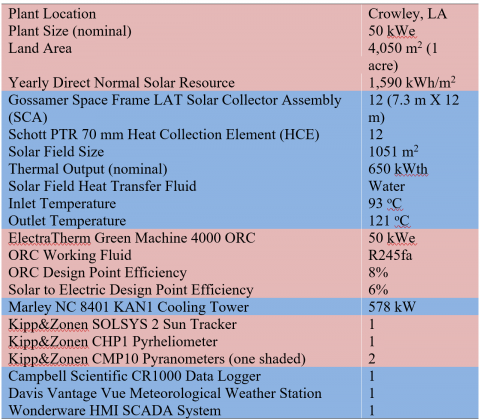
A Wonderware SCADA system controls the entire facility logs all the data, making it easy to collect data for each new study.
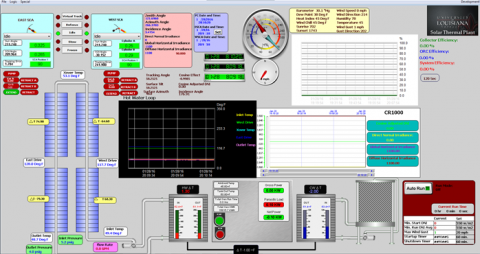
Sample Projects
The START Lab seeks to assist small to medium sized businesses to develop and commercialize new solar technologies. Examples of a few industry-sponsored projects are provided below.
System Modeling
The START Lab has been collecting data and developing predictive models for the CSP plant since 2012, using NREL’s System Advisor Model (SAM), Aspen, ANSYS, MatLab and Simulink, to develop economic models, transient heat transfer models, and real-time performance models.
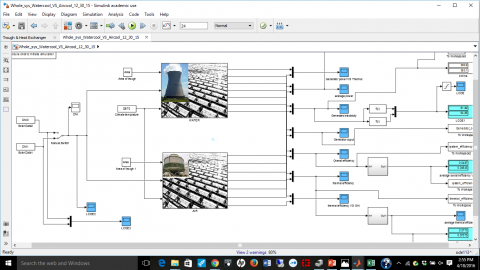
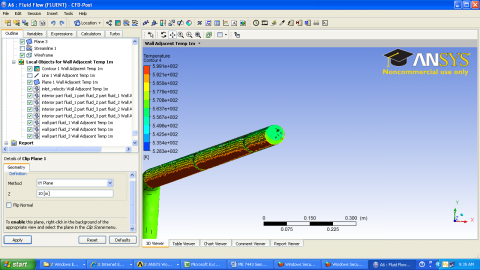
Hybrid Concentrating Solar-Photovoltaic (CSPV) System
Initial field testing of the Greenfield/MH Solar Concentrating Solar Photovoltaic (CSPV) system has recently been conducted. The CSPV unit redirects a portion of the incident solar radiation spectrum (between 500 and 1000 nm) to a Vertical Multi-Junction PV module using a dichroic cold mirror, while allowing normal operation of the thermal system to continue. The system provided high efficiency operation under a concentration ratio of 30, while the thermal efficiency was reduced by only about 9 percentage points, resulting in an overall efficiency increase of the power plant.
Improved Non-Glass Reflectors
The START Lab is performing long-term operational and environmental testing of three metal-organic framework (MOF) thin reflective films: 3M SMF 1100 and SMF 2020, and Konica Minolta. In addition, a soiling study is being performed with the goal of characterizing the optimal maintenance schedule. We are also in discussions to assist two other companies to develop their own low-cost non-film reflector solutions
Low Cost Collector Designs and Solar Desalination
We are performing long-term operational testing of the Gossamer Space Frame 7.3m Large Aperture Trough (LAT) and tracking system, and are working with them on improved low-cost designs. We are also working with D&D Manufacturing on the development of an innovative design for an ultra-low cost design of a trough for solar desalination.
